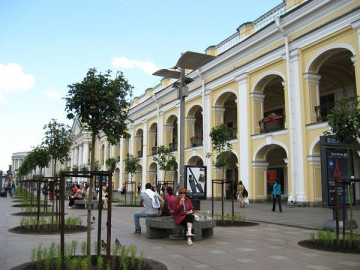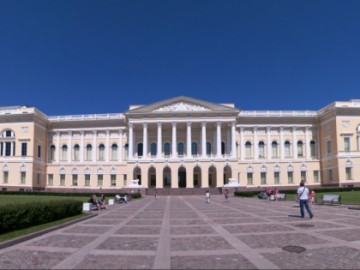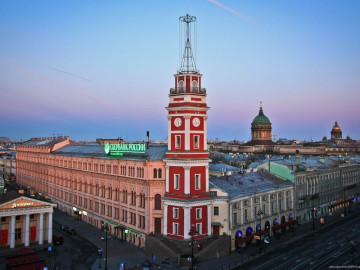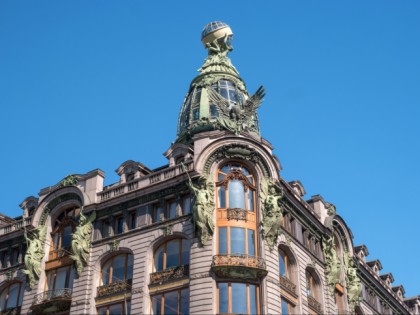Singer House: From Sewing Machines to Books
The Singer House on Nevsky Prospekt has long been occupied by the main bookstore of St. Petersburg. However, it is still known as a house which belonged to the large manufacturer of sewing machines. The first wooden house appeared there in Petrine era and was turned into a theater, but it burned down in 1749. Almost 30 years later, there was built a three-storey mansion for the archpriest Ivan Panfilov, the confessor of Catherine II, then the building went over to officials, and in the middle of the XIX century – to the pharmacist Karl Imzen, the creator of "Imzensky chocolate", which supposed to cure every disease. By the early twentieth century, the building housed several stores, a newspaper office and a photo atelier.
The Singer Company, having bought the building together with the land, planned to build an 11-storey skyscraper for its own office and for leasing the premises. Emperor Nicholas II permitted the construction, but it failed to build a skyscraper, as St. Petersburg building code did not allow structures taller than the Winter Palace. So, the Singer Company succeeded to build an Art Nouveau six-storey building, with an attic. The iron frame of the building was erected during the construction, the drainpipes were hidden inside the walls, the building was equipped with the Otis Company elevators and the roof - with an automatic steam snow removal system. All these were serious technological innovations for that time. The Singer House is faced with gray and red granite, the walls of the courtyard – with glazed brick, and facades are decorated with sculptures and ornaments. The most outstanding sculptures on the Singer House are Valkyries on ship rostrums holding a spindle and a sewing machine – the symbols of light industry, and the harpoon - a symbol of shipbuilding. The building is crowned with a corner tower, which in turn is topped by a glass globe. The bookstore in this building appeared immediately after the revolution. Today, the House of Books occupies two floors.




































